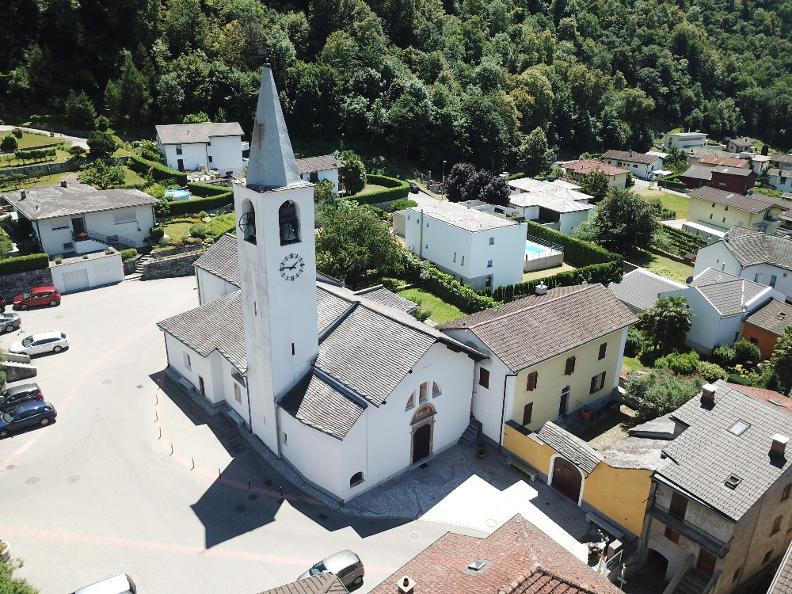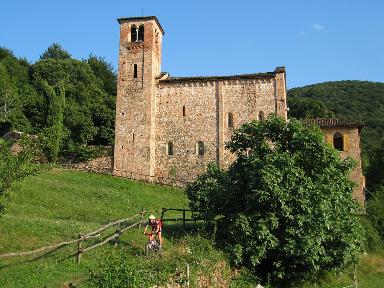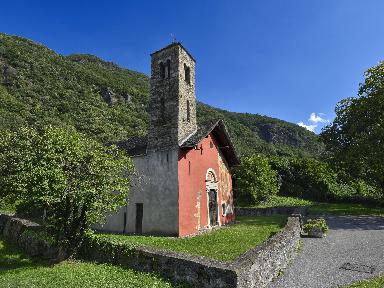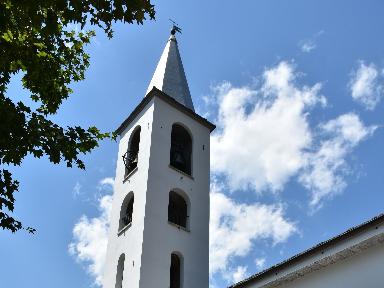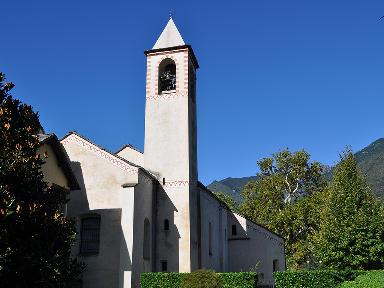
Of medieval origin, the present church of Santa Maria Assunta dates back to the 16th century and was enlarged in the following century.
The portal in Castione marble bears the date 1625 on the architrave. In the lunette of the tympanum there is a fresco depicting a Eucharistic celebration. Inside, the nave with its lunette vault is punctuated by three bays; in the choir there are remarkable stucco frames; on the sides of the triumphal arch there are two figures of prophets (17th century).
The frescoes in the choir depicting Marian subjects, the Sibyls and the Holy Family, by Baldassarre Orelli and his workshop, were partly repainted in the nineteenth century. The rococo style decorative wall paintings were also executed in the 19th century. In the chapel dedicated to Saint Charles, stucco decorations on the vault; putti and Sibyls on the arch (18th century). On the left wall of the chapel, as well as on the left of the triumphal arch, there are some traces of late Gothic frescoes.
In the chapel of the Madonna there are statues of saints, cherubs and sibyls; in the sails of the vault there are other scenes from the life of Mary dating back to the 17th century. The two-storey wooden ciborium with inlays above the baptismal font dates back to the mid-seventeenth century.

